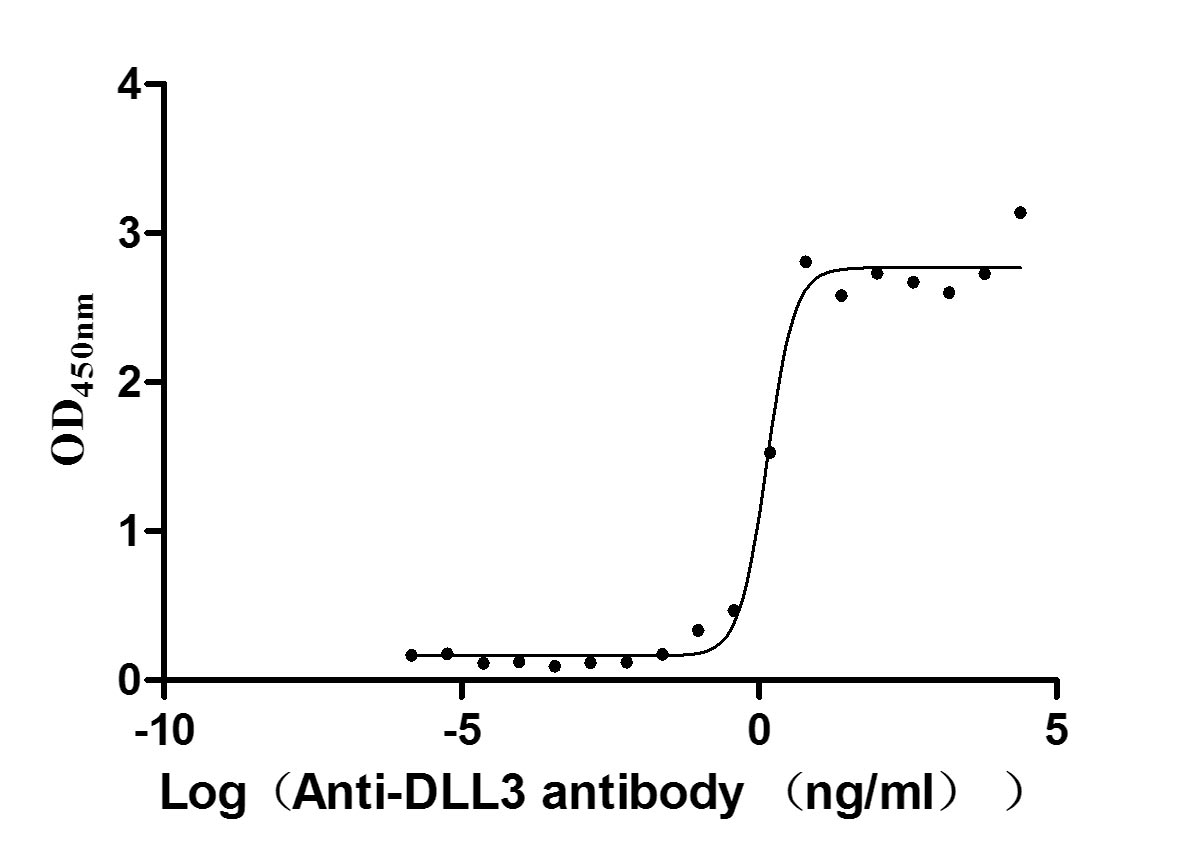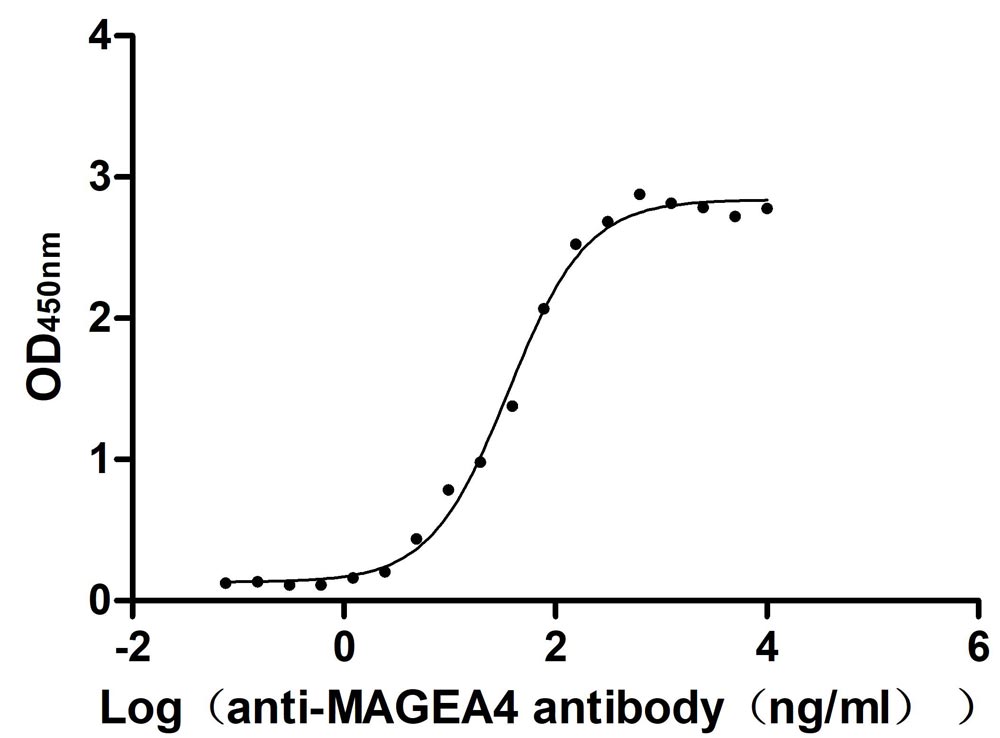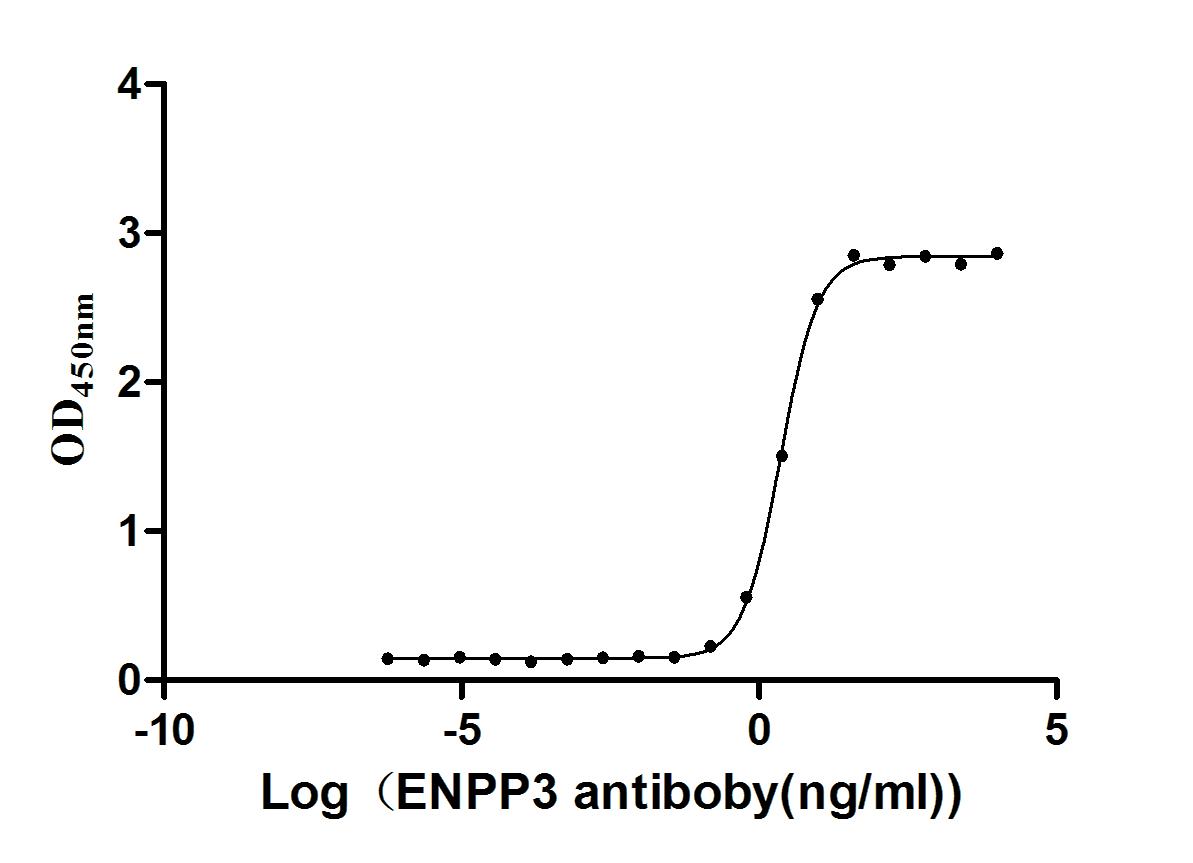Recombinant Human Cartilage acidic protein 1 (CRTAC1)
-
货号:CSB-YP005997HU
-
规格:
-
来源:Yeast
-
其他:
-
货号:CSB-EP005997HU
-
规格:
-
来源:E.coli
-
其他:
-
货号:CSB-EP005997HU-B
-
规格:
-
来源:E.coli
-
共轭:Avi-tag Biotinylated
E. coli biotin ligase (BirA) is highly specific in covalently attaching biotin to the 15 amino acid AviTag peptide. This recombinant protein was biotinylated in vivo by AviTag-BirA technology, which method is BriA catalyzes amide linkage between the biotin and the specific lysine of the AviTag.
-
其他:
-
货号:CSB-BP005997HU
-
规格:
-
来源:Baculovirus
-
其他:
-
货号:CSB-MP005997HU
-
规格:
-
来源:Mammalian cell
-
其他:
产品详情
-
纯度:>85% (SDS-PAGE)
-
基因名:CRTAC1
-
Uniprot No.:
-
别名:68 kDa chondrocyte expressed protein; 68 kDa chondrocyte-expressed protein; Acidic secreted protein in cartilage; ASPIC; ASPIC1; Cartilage acidic protein 1; Cartilage acidic protein 1 precursor; CEP 68 ; CEP-68; CEP68 ; Chondrocyte expressed protein 68 kDa CEP 68; CRAC1_HUMAN; CRTAC1; Protein CRTAC1-B; W307
-
种属:Homo sapiens (Human)
-
蛋白长度:Full Length of Mature Protein
-
表达区域:28-661
-
氨基酸序列SQR AEPMFTAVTN SVLPPDYDSN PTQLNYGVAV TDVDHDGDFE IVVAGYNGPN LVLKYDRAQK RLVNIAVDER SSPYYALRDR QGNAIGVTAC DIDGDGREEI YFLNTNNAFS GVATYTDKLF KFRNNRWEDI LSDEVNVARG VASLFAGRSV ACVDRKGSGR YSIYIANYAY GNVGPDALIE MDPEASDLSR GILALRDVAA EAGVSKYTGG RGVSVGPILS SSASDIFCDN ENGPNFLFHN RGDGTFVDAA ASAGVDDPHQ HGRGVALADF NRDGKVDIVY GNWNGPHRLY LQMSTHGKVR FRDIASPKFS MPSPVRTVIT ADFDNDQELE IFFNNIAYRS SSANRLFRVI RREHGDPLIE ELNPGDALEP EGRGTGGVVT DFDGDGMLDL ILSHGESMAQ PLSVFRGNQG FNNNWLRVVP RTRFGAFARG AKVVLYTKKS GAHLRIIDGG SGYLCEMEPV AHFGLGKDEA SSVEVTWPDG KMVSRNVASG EMNSVLEILY PRDEDTLQDP APLECGQGFS QQENGHCMDT NECIQFPFVC PRDKPVCVNT YGSYRCRTNK KCSRGYEPNE DGTACVGTLG QSPGPRPTTP TAAAATAAAA AAAGAATAAP VLVDGDLNLG SVVKESCEPS C
-
蛋白标签:Tag type will be determined during the manufacturing process.
The tag type will be determined during production process. If you have specified tag type, please tell us and we will develop the specified tag preferentially. -
产品提供形式:Lyophilized powder
Note: We will preferentially ship the format that we have in stock, however, if you have any special requirement for the format, please remark your requirement when placing the order, we will prepare according to your demand. -
复溶:We recommend that this vial be briefly centrifuged prior to opening to bring the contents to the bottom. Please reconstitute protein in deionized sterile water to a concentration of 0.1-1.0 mg/mL.We recommend to add 5-50% of glycerol (final concentration) and aliquot for long-term storage at -20℃/-80℃. Our default final concentration of glycerol is 50%. Customers could use it as reference.
-
储存条件:Store at -20°C/-80°C upon receipt, aliquoting is necessary for mutiple use. Avoid repeated freeze-thaw cycles.
-
保质期:The shelf life is related to many factors, storage state, buffer ingredients, storage temperature and the stability of the protein itself.
Generally, the shelf life of liquid form is 6 months at -20°C/-80°C. The shelf life of lyophilized form is 12 months at -20°C/-80°C. -
货期:Delivery time may differ from different purchasing way or location, please kindly consult your local distributors for specific delivery time.Note: All of our proteins are default shipped with normal blue ice packs, if you request to ship with dry ice, please communicate with us in advance and extra fees will be charged.
-
注意事项:Repeated freezing and thawing is not recommended. Store working aliquots at 4°C for up to one week.
-
Datasheet :Please contact us to get it.
相关产品
靶点详情
-
基因功能参考文献:
- Confirm the increase of CRTAC1 in cartilage biopsies from OA patients undergoing joint replacement by real-time PCR and immunohistochemistry. Furthermore, we report that proinflammatory cytokines interleukin-1beta and tumor necrosis factor alpha upregulate CRTAC1 expression in primary articular chondrocytes and synovial fibroblasts. PMID: 27415616
- It was shown for the first time the propensity of CRTAC1 to form amyloid-like structures, and it was hypothesized that the aggregating property of CRTAC1 may be related to its disease-association. PMID: 27862299
- These results provided new insights into the mechanism of cataract development, and demonstrated that CRTAC1 could be a potentially novel target for cataract treatment. PMID: 27855397
- CRTAC1 acquired an alternate last exon from the tail-to-tail oriented neighbouring gene in humans resulting in the glycosylated isoform CRTAC1-A which represents a new extracellular matrix molecule of articular cartilage. PMID: 17074475
- in bone fracture patients, 12 proteins were related to bone/cartilage metabolism, including: TGF-beta induced protein IG-H(3), cartilage acidic protein 1, procollagen C proteinase enhancer protein and TGF-beta receptor III. PMID: 17602227
显示更多
收起更多
-
亚细胞定位:Secreted, extracellular space, extracellular matrix.
-
组织特异性:Expressed in the interterritorial matrix of articular deep zone cartilage (at protein level). Isoform 1 and isoform 2 are expressed in brain. Isoform 1 is detected in lung and chondrocytes. Detected in cartilage, bone, cultured chondrocytes and lung, and
-
数据库链接:
HGNC: 14882
OMIM: 606276
KEGG: hsa:55118
STRING: 9606.ENSP00000359629
UniGene: Hs.500736
Most popular with customers
-
Recombinant Human Delta-like protein 3 (DLL3), partial (Active)
Express system: Mammalian cell
Species: Homo sapiens (Human)
-
Recombinant Mouse Microtubule-associated protein tau (Mapt) (Active)
Express system: Mammalian cell
Species: Mus musculus (Mouse)
-
Recombinant Human Melanoma-associated antigen 4 (MAGEA4) (Active)
Express system: Mammalian cell
Species: Homo sapiens (Human)
-
Express system: Mammalian cell
Species: Homo sapiens (Human)
-
Express system: Mammalian cell
Species: Homo sapiens (Human)
-
Recombinant Human Tumor-associated calcium signal transducer 2 (TACSTD2), partial (Active)
Express system: Mammalian cell
Species: Homo sapiens (Human)
-
Recombinant Human C-type lectin domain family 4 member C (CLEC4C), partial (Active)
Express system: Mammalian cell
Species: Homo sapiens (Human)
-
Recombinant Human Cytotoxic and regulatory T-cell molecule (CRTAM), partial (Active)
Express system: Mammalian cell
Species: Homo sapiens (Human)




















